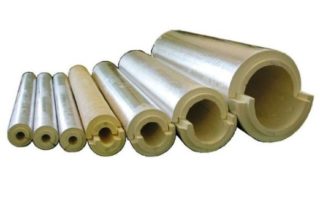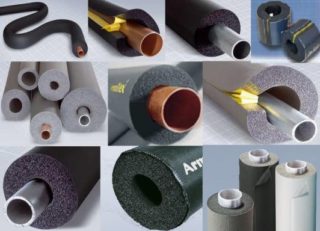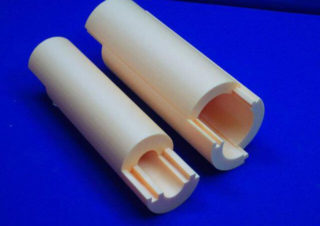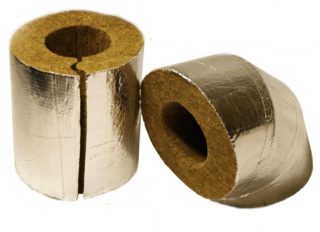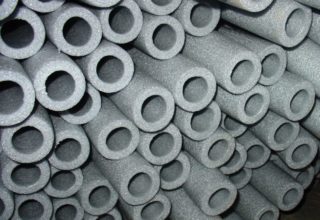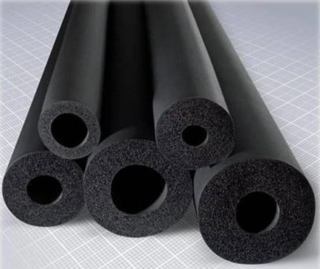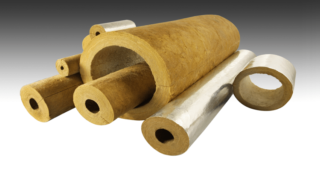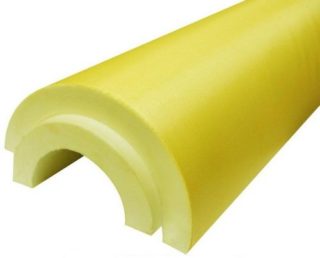Non-insulated pipelines located above the ground or underground, but not deep enough, are prone to freezing in the winter. The consequences are inevitable: blocking the operation of the utility network, pipe breakthrough, equipment failure. These troubles are easily prevented if the thermal insulation is correctly selected and installed. The shell for pipe insulation is optimally suited for this purpose. It is easy to install and prevents freezing.
Necessary properties and shell requirements for pipe insulation
The shell for pipes is a cylinder, notched on one side, or segments fastened together by the principle of a groove-comb. Insulation without grooves can be fixed with clamps, wire, glue. After fixing, a protective cover forms on the pipe surface.
Curly elements are provided for isolation of tees, branches, branches, abutment angles. To connect the shell along the length, use a separate shaped element - the coupling.
Such communication protection does not insulate, but avoids heat dissipation or heating due to the high ambient temperature.
The shell must correspond to the diameter of the pipeline on which it will be mounted. The material of which the insulation is made must be resistant to low and high temperatures.
The main requirements for thermal insulation for pipes:
- long term of operation;
- easy installation;
- low thermal conductivity;
- resistance to mechanical stress;
- protection against burns when accidentally touched;
- biological and chemical passivity;
- ability to maintain constant coolant temperature.
Different materials have excellent characteristics. Given the conditions in which the insulation will be installed, you can choose a shell for pipes with suitable parameters.
Insulating materials for the manufacture of shells
The range of modern insulating materials fully complies with the listed requirements. Shells for insulation of pipes are made of such materials:
- polyurethane foam;
- polystyrene foam;
- basalt insulation;
- foamed polyethylene;
- synthetic rubber.
The insulation is insulated in order to protect against mechanical damage and increase the efficiency of insulation:
- foil;
- fiberglass and fiberglass;
- galvanized and stainless steel.
Polyurethane foam
Polyurethane foam is a material with a finely bubble closed-cell structure. It contains approximately 95% of the closed cells. The PPU shell for pipes has the following technical characteristics:
- low thermal conductivity (0.037-0.042 W / m2 * K);
- high density (40-60 kg / m3);
- does not absorb water (1.5-3%);
- working temperature range: from -180 ° C to + 130 ° C.
Before mounting the PPU shell for pipe insulation, the steel pipeline must be treated with anti-corrosion compounds, because the condensate formed due to the temperature difference remains under the shell and causes corrosion.
Fixation with the help of additional elements leads to the formation of seams, due to the presence of which heat losses increase.In order to seamlessly connect the segments using polyurethane adhesive, it is recommended to fill the free space with polyurethane foam.
Expanded polystyrene
Expanded polystyrene shells are mainly used for insulation of ventilation, water supply, and sewer pipelines located in the ground, since the material has low UV resistance. It causes the destruction of the structure. When warming above-ground communications, it is necessary to wrap the shell or paint with something.
Benefits:
- does not absorb moisture;
- shows resistance to biochemical effects;
- withstands significant static load.
The disadvantages of foam:
- fire hazard;
- not resistant to mechanical stress.
The range of operating temperature of expanded polystyrene is from -50 ° C to + 80 ° C.
Basalt insulation
It is recommended to use basalt shell for insulation of the external pipeline. Its main disadvantage is its high water absorption, which cannot be compensated even with hydrophobic impregnations. Having become wet, the shell completely loses its heat-insulating properties. Operating temperature range: from -40 ° C to + 74 ° C.
Benefits:
- light weight;
- Fire safety;
- resistance to ultraviolet radiation;
- environmental friendliness;
- biological stability.
Disadvantages: used only for insulation of plastic pipes.
It is recommended that the seams of basalt cotton wool be glued with reinforced tape or construction tape, and then painted.
Foamed polyethylene
The shell made of foamed polyethylene is a flexible and lightweight material in the form of a cylinder 1.2 or 2 m long with a slot. The operating temperature range varies from -40 ° C to + 95 ° C. Due to the special plasticity of the material, it is recommended to fix it with plastic or metal tightening clamps.
Benefits:
- relatively low price;
- has the properties of steam, noise and heat insulator;
- resistance to aggressive environment;
- protects against corrosion;
- environmental friendliness.
Minuses: absorbs moisture.
Due to the high degree of water absorption, it is necessary to waterproof the shell of foamed polyethylene.
Synthetic rubber
Synthetic rubber surpasses many materials in its performance characteristics. The heat-insulating shell of this material is produced in the form of cylinders with a longitudinal section, which can be mounted by putting the casing on the pipeline and gluing it along the section.
Benefits:
- resistance to ultraviolet;
- resistance to aggressive environments;
- minimum level of water absorption;
- effective warming;
- vapor tightness;
- long service life;
- resistance to mechanical stress.
In order to improve the appearance, the insulation is painted.
Dimensions and Diameters
The shell is used for thermal insulation of aboveground and underground utilities. The protective casing is formed of two or more segments interconnected. The larger the diameter of the shell, the more segments. The shell of soft and flexible material, such as foamed polyethylene, can be made in the form of a cylinder with a longitudinal section. Shells of relatively dense material, designed for pipes of small diameter, up to 2 inches, consist of semi-cylindrical segments. If the diameter of the pipe is from 2 to 3 inches, the segments are already 3. For pipes of larger diameter, shells consisting of segments in a quarter circle are intended.
The inner diameter of the shell must match the outer diameter of the pipe.
The thickness of the insulation of which the shell is made varies from 9 to 90 mm. A heater with a large diameter and thickness will cost more. According to this parameter, the shell is selected taking into account the requirements for the effectiveness of thermal insulation.
Dimensions along the length also range from 1 to 2 m. The last characteristic is determined by the convenience of transportation, manufacturing and installation.
The advantages of the shell for pipe insulation

Polyurethane shell is most suitable for pipe insulation. This insulation is characterized by several advantages:
- multiple use;
- resistance to mechanical, biological, chemical, atmospheric influences due to high density and chemical composition, including resistance to rodents and pests;
- durability;
- easy and quick installation at any temperature;
- the ability to install without the use of additional fasteners;
- environmental friendliness;
- quick dismantling if necessary to repair a section of the pipeline;
- use for insulation of underground and above-ground communications;
- does not burden a design;
- shows inertness to fungi and mold;
- light weight;
- insignificant coefficient of thermal conductivity;
- noise insulation properties.
At a temperature of the pipeline above + 150 ° C, the insulation is coked. In addition, it is destroyed under the influence of ultraviolet rays, therefore, a necessary condition for the insulation of above-ground communications is the presence of a protective coating.
Basics of installation and operation
Before installing the shell, the pipes must be inspected to eliminate the risk of leaks. Then, the pipeline should be cleaned of traces of corrosion and coated with a primer twice.
Insulation segments should be installed with a longitudinal seam offset of 5-10 cm. To ensure better insulation, the joints must be glued with foil or ordinary tape.
Having closed the pipeline with a protective casing, it is necessary to fix the insulation with clamps, wire or steel tape. Then, on top of the shell, if there is no factory protective coating, a roofing material, fiberglass or roofing is wrapped. Protection is also fixed with plastic or metal clamps. Joints are coated with glue to reduce heat loss.
Together for an 8-hour working day, you can insulate up to 150 m of the pipeline.
Scope of application
The shell for insulation of pipes made of polyurethane foam or other material is used to maintain a constant temperature of the medium circulating inside the main line, to protect people from burns at high or low temperature of the pipe. This material is used for insulation:
- sewer pipes;
- cooling lines;
- hot and cold water supply networks;
- chemical synthesis systems;
- pipelines in the oil and gas industry.
High speed and ease of installation distinguish the shell from the insulation materials of another form factor. Due to the high efficiency of insulation, environmental friendliness, ease of use of the shell for insulation of pipes, it is popular in the field of state and private construction, industry.
